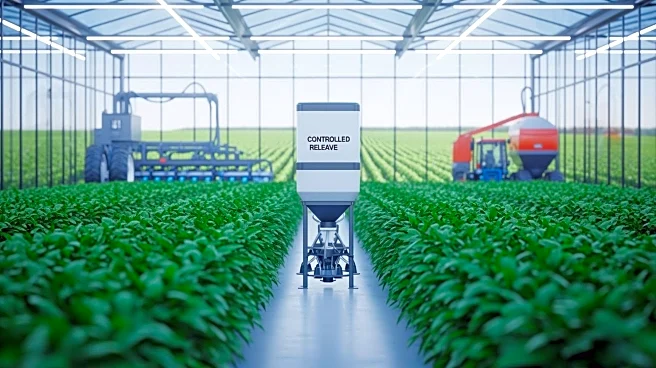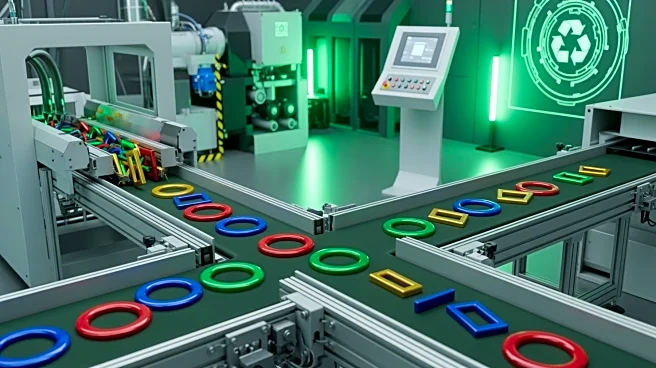What's Happening?
The United States Controlled Release Fertilizers Market is anticipated to grow significantly, reaching USD 4,288.4 million by 2031. This growth is driven by increasing demand for sustainable agriculture
practices and the need to enhance crop yield while minimizing environmental impact. Controlled Release Fertilizers (CRFs) are designed to release nutrients gradually, improving nutrient use efficiency and reducing pollution. The market caters to agriculture, horticulture, and turf management sectors, with advancements in polymer coating technologies and nutrient release mechanisms enhancing fertilizer efficiency. Recent developments in the U.S. include strategic expansions to improve supply chains and distribution networks, alongside increased R&D investments targeting environmentally sustainable fertilizers.
Why It's Important?
The growth of the Controlled Release Fertilizers Market is crucial for the U.S. agricultural sector, as it aligns with the increasing adoption of precision agriculture and resource-efficient farming practices. These fertilizers help improve crop productivity while reducing environmental impact, addressing regulatory pressures to minimize nutrient runoff and leaching. The market's expansion supports the cultivation of high-value crops, which require precise nutrient delivery to enhance yield and quality. As demand for eco-friendly fertilizers rises, companies investing in CRFs stand to benefit from increased market share and improved sustainability credentials.
What's Next?
Looking ahead, the U.S. market is expected to see further advancements in fertilizer technologies, with companies focusing on enhancing polymer coatings and nutrient release mechanisms. Strategic expansions in manufacturing and storage facilities are anticipated to meet rising demand. Additionally, increased R&D investments will likely lead to the development of customized solutions for various crops and growing conditions, further driving market growth. Stakeholders, including agricultural businesses and environmental groups, may continue to advocate for sustainable practices, influencing policy and market trends.
Beyond the Headlines
The shift towards controlled release fertilizers reflects broader trends in sustainable agriculture, highlighting ethical considerations around environmental stewardship and resource management. As the market grows, it may prompt discussions on the balance between technological innovation and traditional farming practices, potentially influencing cultural perceptions of agriculture. Long-term, the adoption of CRFs could contribute to improved soil health and reduced labor costs, offering economic benefits to farmers and supporting the resilience of the agricultural sector.











